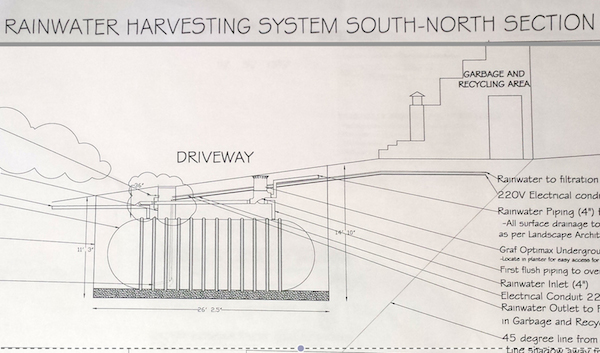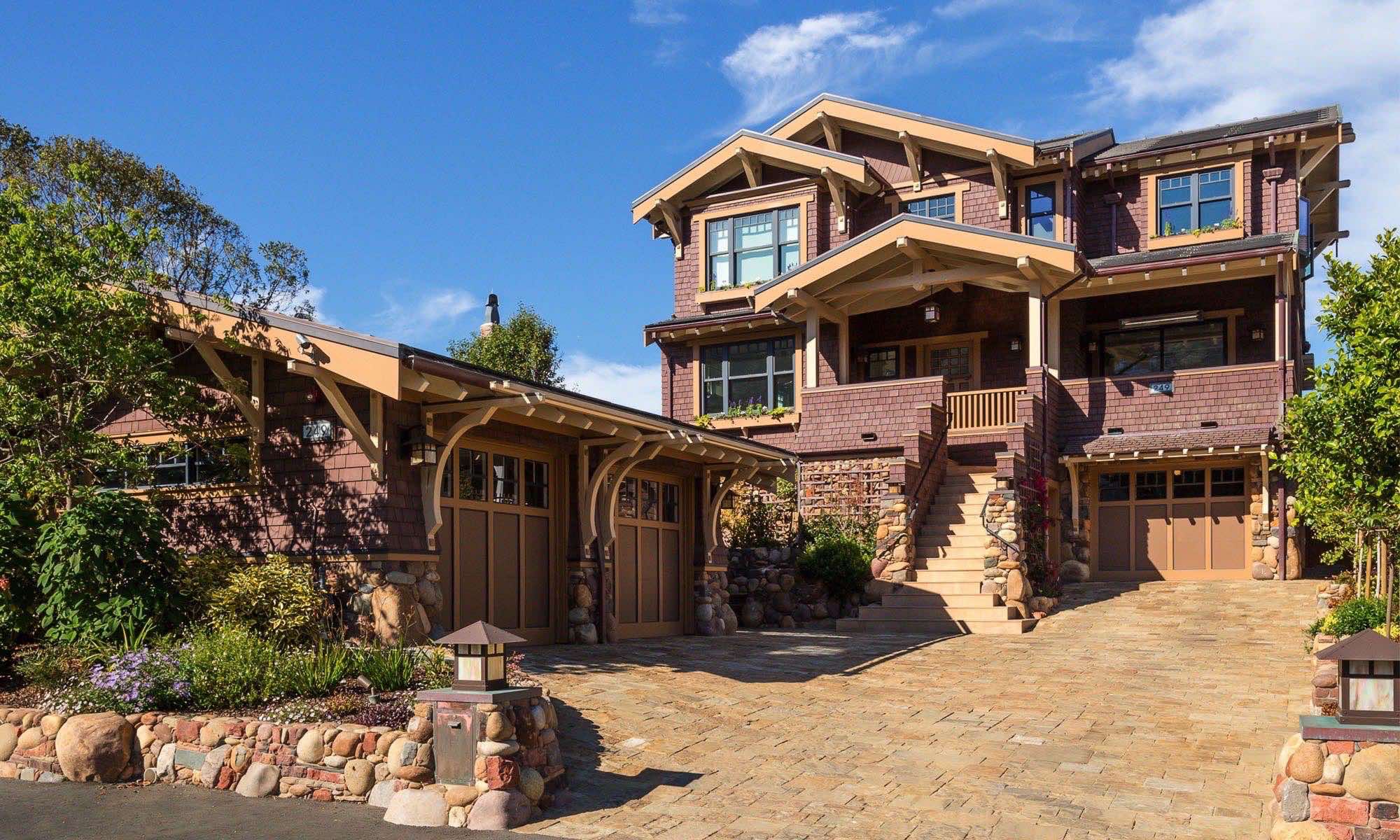Conserving water is extremely important, especially in California, which experiences frequent droughts. In total, the Ecohome uses five different water systems (City, Grey, Rain, Salt and Black) to effectively conserve and manage water resource. City water is used as minimally as possible, grey water reuses used water from sinks and the washing machine for landscaping, rain water is used for the hot tub and irrigation, salt water sourced from the ocean is used for the aquarium, and black water discharge is minimized. According to the EPA, energy is used in five key stages in the water cycle, which is effectively managed through the Ecohome’s water conservation.
Extracting and conveying water: Extracting water from rivers and streams or pumping it from aquifers, and then conveying it over hills and into storage facilities is a highly energy intensive process. In California, the State Water Project (SWP) pumps water almost 2000 ft over the Tehachapi Mountains. The SWP is the largest single user of energy in California. It consumes an average of 5 billion kWh/yr, accounting for about 2 to 3 percent of all electricity consumed in California, not including steps 2-5 below!
Treating water: Water treatment facilities use energy to pump and process water.
Distributing water: Energy is needed to transport water.
Using water: End users consume energy to treat water with softeners or filters, to circulate and pressurize water with circulation pumps and irrigation systems, and to heat and cool water.
Collecting and treating wastewater: Energy is used to pump wastewater to the treatment plant, and to aerate and filter it at the plant. On average, wastewater treatment in California uses 1,000 kilowatt-hours per acre-foot.
By reducing the amount of water we use, we use lessen our demand on the energy-intensive systems that deliver and treat water. We modeled all our uses and sources of water and hired an expert, Bobby Markowitz of Earthcraft Design (www.earthcraftdesign.com) to help design the systems. Our project will reduce the amount of water consumed (and commensurate energy consumption) by about 80% compared to a standard home. How?
Rainwater Capture and Reuse
With 29.5” of annual rain in Pacifica, believe it or not our roof will receive 51,000 gallons of water each year. We are burying an 8000 gallon tank under our driveway to capture this water. When rain begins, the first 50 gallons, which usually have some debris from the roof, are diverted to the garden. The balance of water is passed through a simple sand filter, the stored in our tank. This rainwater will be used to wash clothes in the laundry, for filling our hot tub, for flushing the toilets, and via a convenience hose bib for washing the car

Greywater Capture and Reuse
Greywater reuse is amazing simple, affordable, and effective water conserving measure. In our project greywater sources are used water from the clothes washing machine, the hot tub, and the showers. Unlike the rainwater, which can be stored, greywater must be used immediately. The greywater is passed through several sand filters, and used in the garden. Through selection of low water consuming plants, the entire irrigation requirements of our property are met through greywater. Unlike rainwater – which is seasonal in California, greywater is generated at a constant rate over the year and is available in the dry summer and fall months when irrigation requirements are greatest.
Appliance Selection.
Our clothes and dish washing machines will be ultralow flow appliances, consuming typically 30-50% less than a standard machine. Also, our main bathrooms have simple heated towel bars which quickly dry towels after use. These devices consume only 75 watts of power and enable a towel to be used for up to a week, greatly reducing washing requirements and providing a degree of luxury with a hot towel. Finally, we use our hot tubs often. Modern hot tubs keep the water clean with minimal or no chemicals, and frequent hot tubs – in rain water (cleaner than city water) – minimize shower requirements
Landscape Design.
Many of the plants and that were selected for landscaping elements are drought tolerant and use minimal water. The garden is mostly supplied through the recycling of grey water from appliances as well as rainwater capture.
Practicality: We elected not to go “all the way” and try to use rainwater for potable water in the faucets, dishwasher, and shower heads. Similarly “black”, or toilet water, will be discharged to the sewer.
